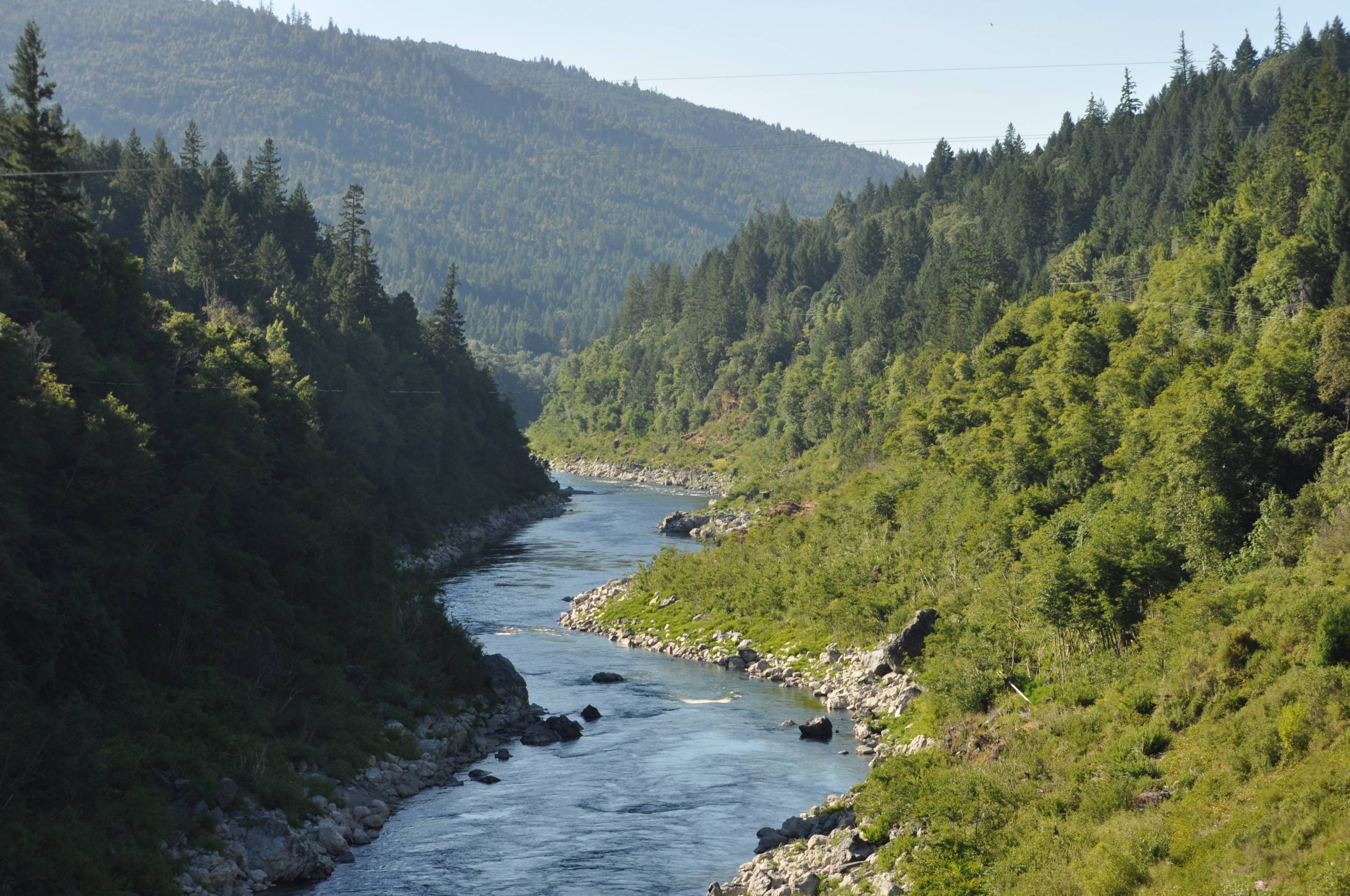By: Darryl Knudsen, Executive Director & Bruce Shoemaker, Klamath project Liason
The struggle of the diverse and broad coalition of tribes and others who value the fundamental importance of a healthy and free-flowing Klamath cleared a daunting and important hurdle today with the announcement by PacifiCorp, the States of California and Oregon, the tribes and other stakeholders that they have reached a new agreement and renewed their commitment to move forward with dam removal as soon as possible.
International Rivers welcomes the news that, after an unexpected five-month delay, the Klamath River dam removal initiative is again moving forward. The removal of these four destructive and uneconomic Klamath dams will be the largest, and possibly the most important, single initiative for river restoration anywhere and at any time. Its success has important implications for international efforts to protect and restore rivers worldwide. The historic agreement to remove these dams is truly a victory for not only the grassroots movements and Indigenous communities behind the Klamath dams removal, but a precedent and beacon of hope to grassroots struggles the world over to remove destructive large dams on vital rivers.
The Klamath dams in far-northern California and southern Oregon in the western United States have long been a focal point of controversy for Indigenous tribes and environmental justice organizations, with Iron Gate, the tallest of the four Klamath dams, towering 173 feet above the choked off river below. These dams have been linked to deteriorating water quality and crashing salmon runs, devastating the cultures, lives and livelihoods of the tribal people whose territories and way of life are intimately bound to the Klamath.
After a decades-long tribal-led campaign, a diverse coalition of groups agreed on a plan to remove the dams by 2020. However, federal regulators brought uncertainty and delay with a decision in June of this year. The initial response of dam owner and operator PacifiCorp (a subsidiary of Warren Buffett’s Berkshire Hathaway) stoked concerns that the hard-won agreement was in jeopardy of falling apart. In response, a network of tribal, environmental and social justice organizations, including International Rivers, mobilized in an intensive campaign to convince PacifiCorp and Warren Buffett to proceed as planned with dam removal.
We would like to thank all those who organized this campaign, signed petitions and contacted Berkshire Hathaway as well as the public officials in California and Oregon who made this new agreement a priority. We see this as an inspiring sign of hope and indication of what is possible, both for advocates of other dam removal efforts, for those fighting against new hydropower dams around the world, and still others working on related river restoration.
This success demonstrates the power that tribes, local communities and environmentalists can have. The broad coalition formed to advocate for the Klamath includes other water users, researchers, scientists, economists, government and, even private sector operators, highlighting the value of a healthy Klamath to a wide range of stakeholders. It is especially inspiring to see the power of this river to unite these stakeholders at a time of great political division in the US and in the middle of a devastating global pandemic.
In the last two decades dam decommissioning has taken off widely, with many hundreds of dams removed, mainly in Europe and North America. Few have been on the scale of any of the four Klamath dams, however. Restoring the Klamath to a free-flowing river will not only allow the salmon to once again run free, it will also be a step towards repairing a longstanding injustice perpetrated on tribal peoples along the river’s length.
The struggle to realize a healthy, free-flowing Klamath River demonstrates that it is never too late to save a river. The agreement to decommission the Klamath’s uneconomic and destructive dams, along with its nearly $500 million anticipated price tag, also drives home the inherent value of free-flowing rivers and underscores the benefits of protecting and preserving rivers in the first place. Currently, less than 30% of the world’s large rivers still run free. International Rivers is working with grassroots movements the world over to protect many of these rivers and their communities from suffering a similar fate to that of the Klamath river basin.
The story of the Klamath is also a stark example of the dire consequences, unrecognized and unacknowledged for far too long, of the ill-considered damming of our world’s rivers on people, fisheries and the environment. It is a story that should serve as a warning and cautionary tale to advocates for new dams. It is also a story that should be embraced as inspiration and rallying cry for all those tribes, communities, responsible public officials, and river-advocates worldwide fighting to stop the further damming of the world’s rivers, whether in Asia, in South America, in Africa, or elsewhere. And for the 70% of the world’s rivers which are already dammed, the story of the struggle for a healthy Klamath should serve as a precedent, endorsement, and beacon of hope to all those, who yearn to restore their vital riverine ecosystems to their natural, healthy, and vibrant states.
Featured image Klamath River | Photo credit Anna Murveit / KRRC

